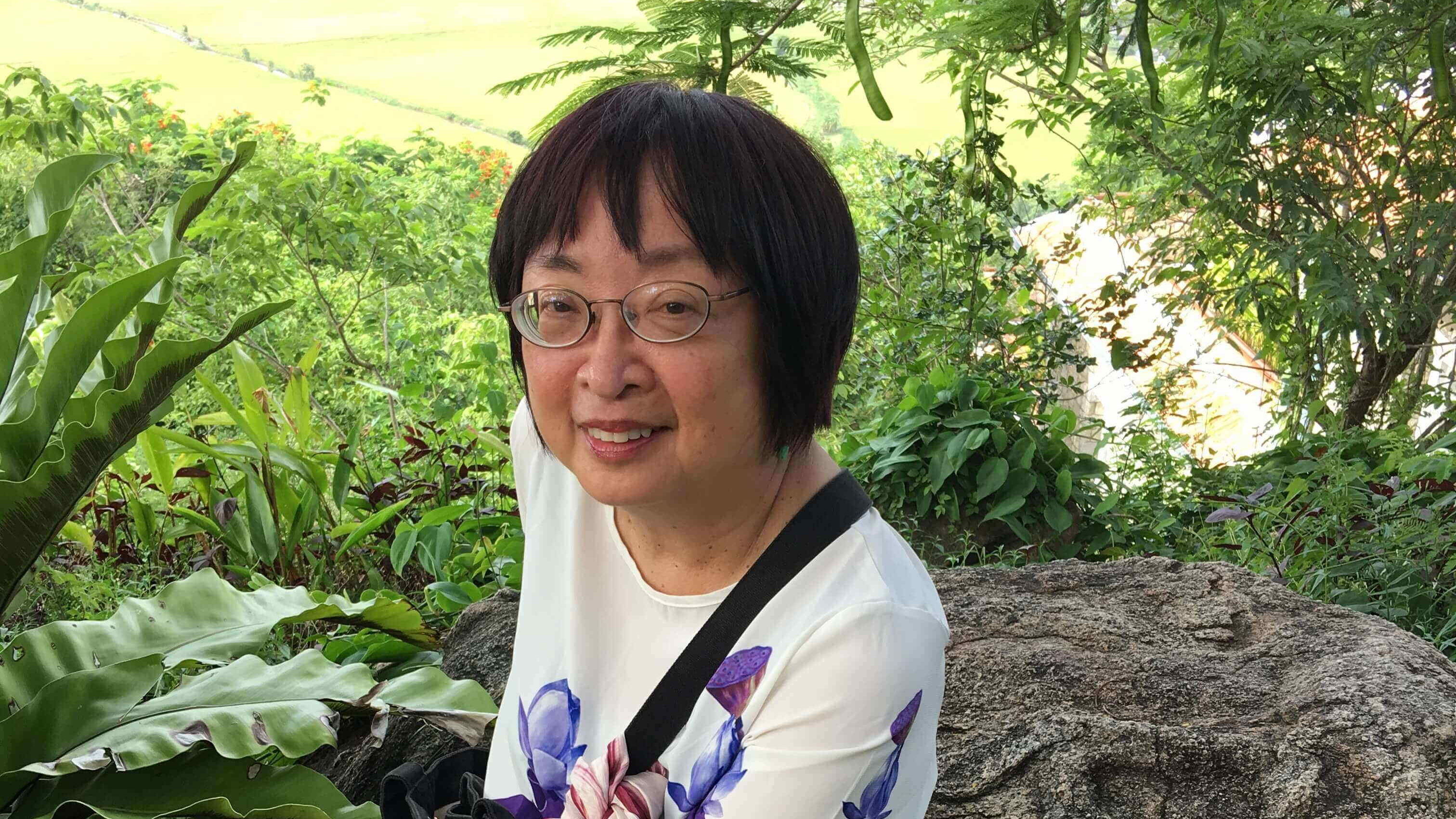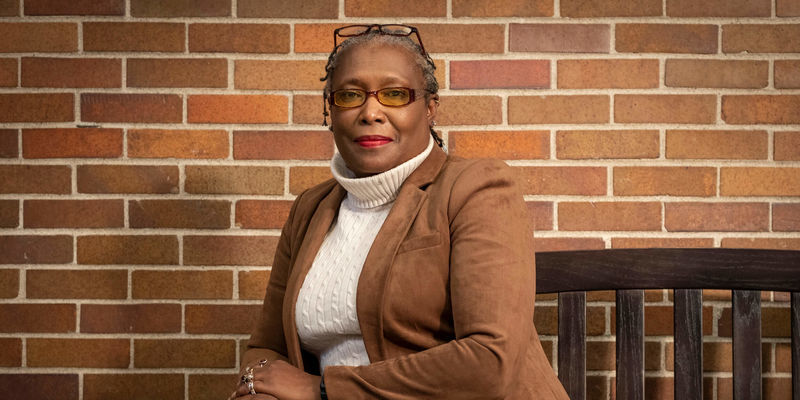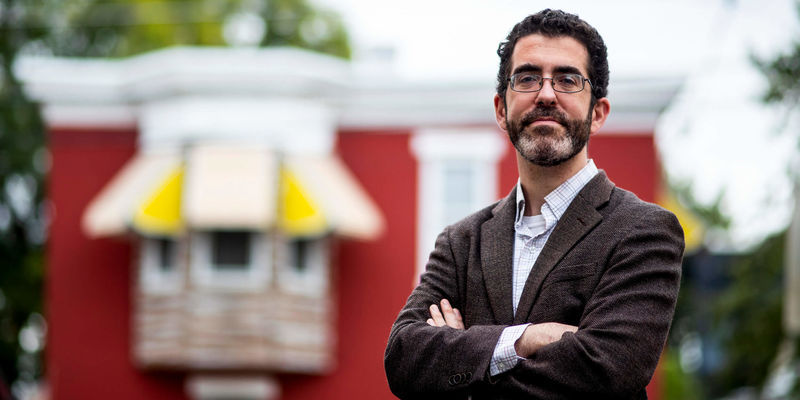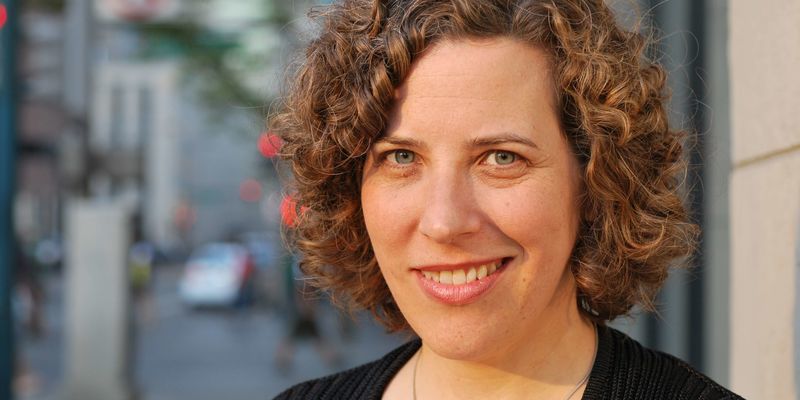Attacks on the Asian American community are tied to a history of racism and prejudice
Nguyễn Thị Điểu, an associate professor of history at the College of Liberal Arts, talks about the 1882 Chinese Exclusion Act, the war in Vietnam and other events that have helped fuel the recent wave of anti-Asian violence.

Over the past year, the Asian American community has been inundated by a wave of racially motivated attacks, including verbal abuse, vandalism, beatings and the shootings that claimed the lives of six women of Asian descent in Atlanta in March.
For Nguyễn Thị Điểu, an associate professor of history at the College of Liberal Arts, the violence is part of a chain stretching back as far as the 19th century.
We spoke with her about the history of several Asian communities in the U.S., the racism and prejudice they have faced, and the impact of colonialism and war on the changing image of Asians in the U.S.
Temple Now: What are some of the most notable examples of racism and discrimination the Asian American community has experienced in the past?
Nguyễn Thị Điểu: Just to mention a few from recent decades: the Ku Klux Klan attacks against Vietnamese fisherfolk in Texas from 1979 to 1981; the 1982 murder of Vincent Chin, a Chinese American, who was beaten to death by two white attackers on the assumption that, being “Japanese,” he had stolen work from American auto-workers (the two attackers were convicted of manslaughter but did not do jail time); the Cleveland Elementary School shooting that took place in Stockton, California, in 1989, in which the white gunman discharged his weapon at children, killing five and wounding 32, all of them refugees from Southeast Asia; the 1992 anti-Korean riots in Los Angeles, which gave birth to the “Rooftop Koreans” meme; and the 9/11-related anti-Muslim reaction that targeted peoples of South Asian descent, often regardless of religion. And, in the most recent of a long series of anti-Asian/Asian American racist manifestations, the murders of six Asian American women in Atlanta in March.
TN: One of the most well-known examples of anti-Asian discrimination is the 1882 Chinese Exclusion Act, which was the first in U.S. history to suspend immigration for a specific nationality. Why were Chinese immigrants targeted?
NTD: The 1848 Gold Rush in California exacerbated a latent anti-Chinese sentiment. Gold was found at Sutter’s Mill near San Francisco, which opened the gate to a flood of gold miners (about 300,000) from not only the United States but also from all over the world. Chinese migrants arrived en masse and their presence and appearances were perceived as a threat to an emerging, white-majority, Social Darwinian-inspired American identity. The 1871 massacre of the Chinese community in Los Angeles caused 18 deaths, for which eight people were convicted, but their convictions were later overturned. Vigilantes attacked Chinese miners in several states: an 1885 massacre in Rock Springs, Wyoming, took the lives of more than a dozen Chinese miners and left the city’s Chinatown in ashes.
Chinese were among the first to be targeted not only by the American miners, but also by American public opinion, becoming the prime object of legislation. To cite a few: the People vs. Hall case in 1854 that rejected the testimony of an Asian person against a white person and the 1875 Page Act, which targeted Chinese women suspected of entering the country for “lewd, immoral purposes” as “prostitutes.”
Within a context of widespread rumors that the Chinese immigrants spread diseases like smallpox, the U.S. Congress passed—and President Chester A. Arthur signed—the 1882 Chinese Exclusion Act, which prohibited the immigration of Chinese men for 10 years and denied citizenship to the Chinese already settled in the U.S. It became permanent legislation with the Geary Act of 1892, which required Chinese people in the U.S. to carry a certificate of residence. It was the first of a series of measures to limit or prohibit the immigration of members of a particular ethnic, national or political group.
These sentiments and individual acts of violence were set against the cultural, ideological and historical background of the Manifest Destiny doctrine, which argued that the expansion of the U.S. across the continent was justified and inevitable, and of the text of Rudyard Kipling’s 1897 poem, “The White Man’s Burden.” Kipling exhorted President William McKinley to take over the Philippines to “civilize and Christianize” the peoples there. In fact, Filipinos had been Christianized for 300 years under Spanish rule. These racist manifestations usually would erupt during times of financial and economic crises as well as in conditions of political instability.
The anti-Chinese racist reaction was slightly tempered during World War II, where “good” Chinese Asians were massacred by “bad” Japanese Asians in the Nanjing massacre, dubbed the “Rape of Nanjing,” and when an anti-Fascist/anti-Japanese alliance was struck between the United States and Republican China under Chiang Kai-shek. This temporary alliance resulted in the nullification of the Exclusion Act in 1943.
TN: How have colonialism and war affected how various Asian American groups have been perceived and treated?
NTD: This question is too vast and I can only answer it by narrowing its scope and turning to two related cases of American interventions in Asia: the Spanish-American and Philippine-American Wars of the 1890s to 1900; and the Second Indochina War, which was fought from 1960 to 1975.
The Spanish-American War of 1898 led to the American intervention not only in Cuba but equally in the Spanish colony of the Philippines, culminating in the Philippine-American War of 1899 to 1902. The United States waged a type of war in the Philippines that can only be described as “racist,” with Filipino revolutionaries pitted against the better-armed American forces and William Howard Taft—who went on to become the first Governor General of the Philippines and later President of the U.S.—calling the revolutionaries “little brown brothers.”
During the 1902 campaign on the island of Samar, Brigadier General Jacob F. Smith—a veteran of campaigns against Cheyenne and Apache and in Cuba—instructed his officers “to kill and burn; the more you kill and burn, the better it will please me,” and when asked about an age limit, he replied, “Kill everyone over 10.” It was during this conflict that the United States’ forces used the infamous “concentration zones,” widely resorted to “water torture” (now politely known as “waterboarding”) and practiced a “scorched earth” policy that devasted crops and villages and resulted in famines throughout the islands. The estimated 200,000 deaths caused by starvation were labelled “collateral damage,” a term that was to be widely employed during the Second Indochina War.
That type of mentality was carried over to the war in Vietnam where the 1968 Mỹ Lai massacre of more than 500 civilians—women, children and elderly men—was committed by the U.S. Army’s Charlie Company, under Lieutenant William Calley. Of the 14 soldiers later charged, only Calley was found guilty, though paroled in 1974 by President Richard Nixon.
After the war ended in 1975, Vietnamese refugees in the U.S. encountered an open-arms welcome from the public but also, as the result of the residual question of POWs, a certain hostility, especially among American veterans, some of whom carried a visceral hatred for all things Vietnamese. Some of these veterans integrated into the klan and applied their military experience in KKK-conducted hate campaigns.
This was not helped by U.S. popular culture where a string of movies (including Rambo; The Deer Hunter; Apocalypse Now and Full Metal Jacket), Broadway shows (like Madame Butterfly, The King and I and Miss Saigon) and publications exacerbated a generalized anti-Asian and even a more specific anti-Vietnamese hostility.
TN: What do you feel sparked the recent wave of violence?
NTD: The unproven accusation that the novel coronavirus responsible for the COVID-19 pandemic was deliberately designed and spread by People’s Republic of China state actors, which was propagated by influential American politicians and their enablers in the media and whipped into a fury by former President Trump’s repeated references to the “Chinese virus” and “Kung Flu.” It does carry an echo of the 1900 outbreak of bubonic plague in San Francisco. The Chinese community was blamed for the plague; Chinese had their homes searched and properties destroyed. Asians said to be disease-ridden were detained at San-Francisco’s Angel Island penitentiary.
TN: What advice would you give people who want to get involved in their communities?
NTD: Come together as a community, not only Asian but of all ethnic backgrounds, no matter your political or racial or ethnic origins. Go beyond the ethnic and nationality-restricted boundaries. Become more vocal, more visible. Do not stand alone but strike alliances with other minorities across boundaries of ethnicity, culture, gender or political affiliation.
—Edirin Oputu


